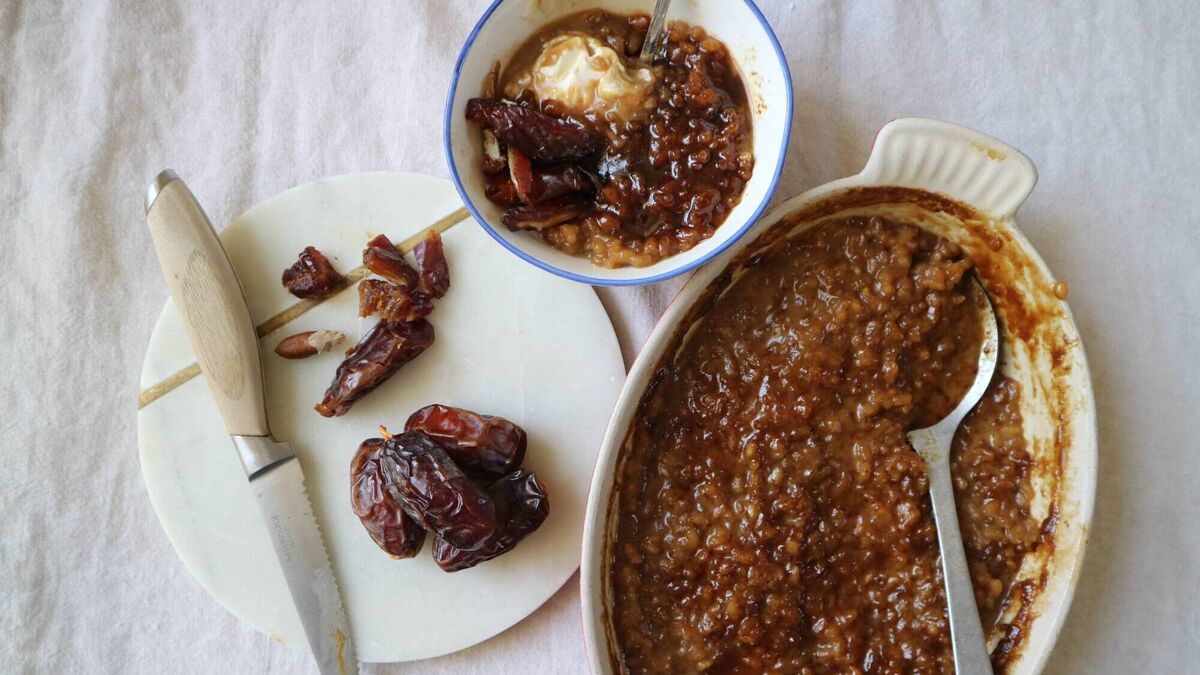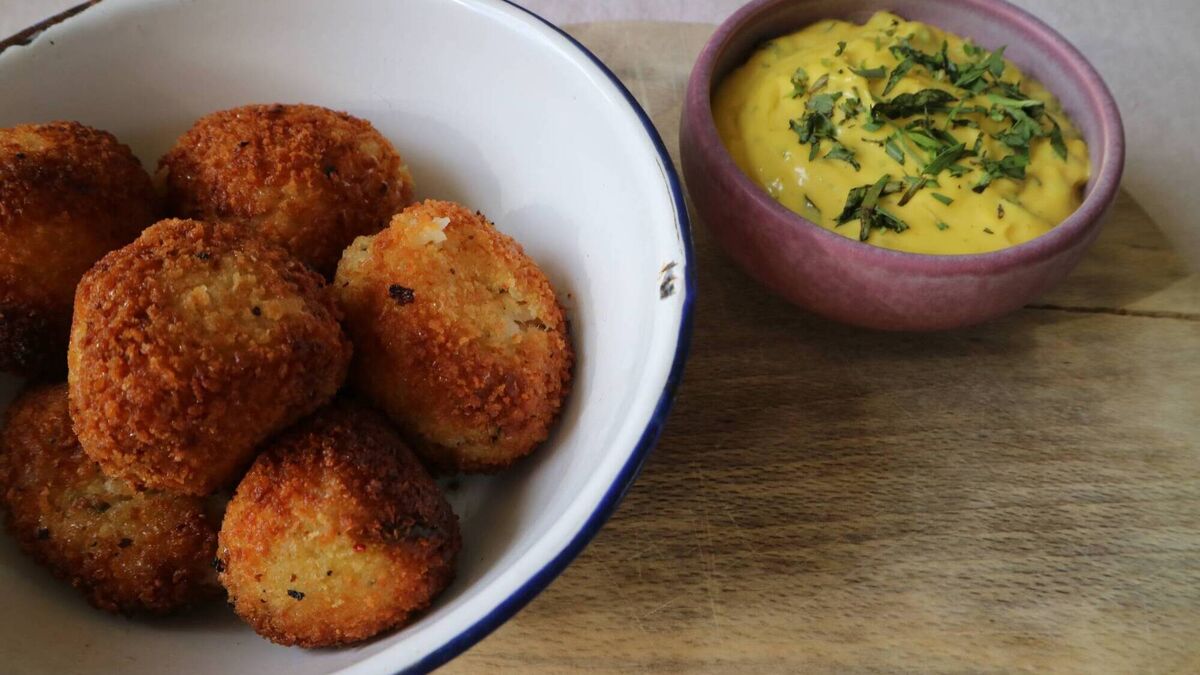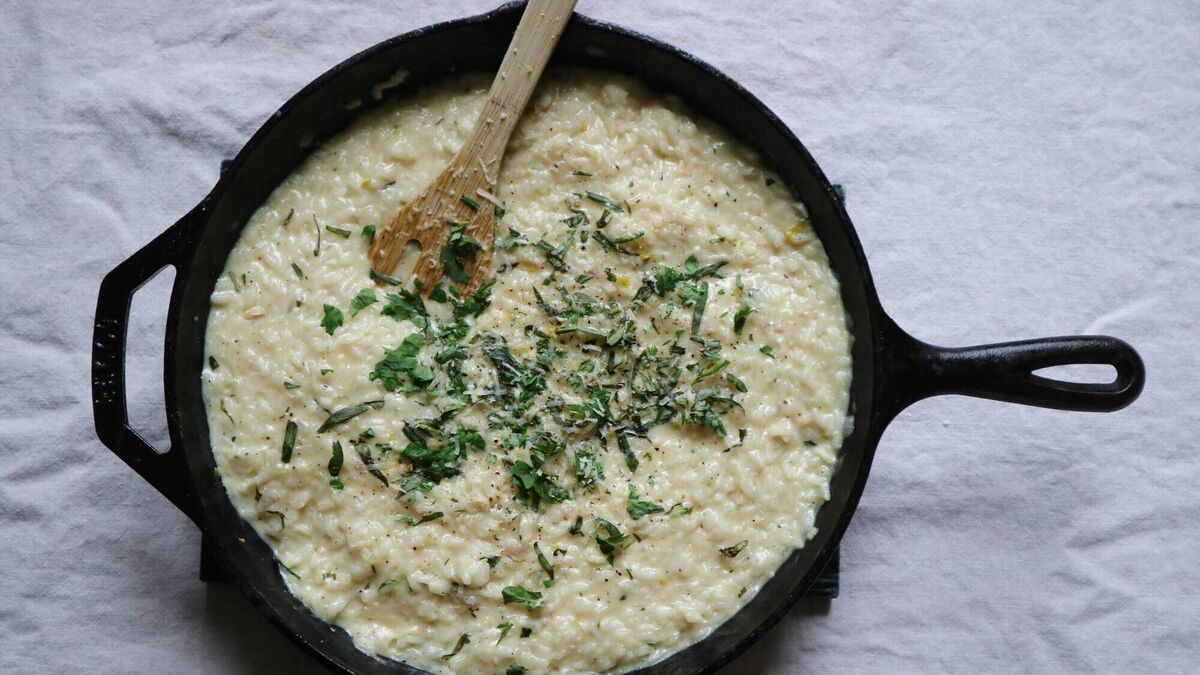Currabinny cooks: How to make the most delicious baked rice pudding and other rice recipes

Rice pudding is so easy to make in the oven. Picture: Bríd O'Donovan
Risotto is a northern Italian dish created by stirring rice with broth over a stovetop until it reaches a creamy consistency. At its most classic and introductory level, risotto is an incredibly simple dish which relies on just a small handful of very humble ingredients to achieve delicious results: rice, of course, some butter, maybe an onion and some wine, broth and a finishing of parmesan. There is something so soothing and elegant about the process of slowly adding the broth to the rice until the rice softens and the broth reduced and creamy. The technique and adaptability of making risotto means that there are limitless variations and elaborations on the dish.
The main ingredient of risotto is, of course, rice. Rice was introduced to Italy by the Arabs in the 14th century and was cultivated first in Sicily and Naples before eventually finding a prolific home in the marshy Po Valley in the North. Rice became a prized and profitable commodity amongst the elites and merchants of Milan, Venice and Genoa. Paella in Spain, which at the time ruled Milan, has similar beginnings.
Legend has it that a church-sponsored stained-glass colourist was pranked by an assistant in September 1574 when he added a pinch of saffron to his maestro’s risotto and the defining recipe Risotto alla Milanese was born.
Up until the 18th-century, risotto included boiled rice as an ingredient. The recipe version that most resembles what we eat in the 21st century was first published in 1829. It included roasting the rice with butter and onion, then adding broth little-by-little while stirring continuously until it was creamy and rich.
Arborio rice is traditionally called for in recipes: it is a short-grain rice named after the town of Arborio in Piedmont Italy. However, the medium-grain rice from the northern Italian provinces, called Carnaroli, is actually higher in starch, has a firmer texture, and is a longer grain than arborio. Technically that medium-grain makes it a superior rice for risotto than arborio. You won’t go wrong using either and arborio is usually easier to find.
After choosing the correct rice, the next most important ingredient is good stock or broth. Homemade chicken or vegetable stock is always the best option but you can get good quality stock from some supermarkets and food stores these days.
We always make loads of risotto because it is great the next day for lunch or you could use whatever you don’t eat initially to make delicious, deep-fried balls of risotto called arancini.
Arborio rice isn’t just good for making risotto with, it is also pretty much the same as pudding rice and therefore can be used to make lovely sweet rice pudding.
Baked rice pudding with coconut sugar
Baking rice pudding is so easy and doesn’t require standing by the stove endlessly stirring. You simply place all the ingredients in a baking dish and place in a preheated oven until ready.

Servings
2Preparation Time
5 minsCooking Time
1 hours 30 minsTotal Time
1 hours 35 minsCourse
BakingIngredients
40g butter
100g arborio rice
70g coconut sugar
1 vanilla pod, split, seeds scraped out
800ml oat milk
Pinch of sea salt
Method
Preheat the oven to 180°C.
Butter a small to medium-sized casserole or ovenproof dish. Tip in the rice, oat milk, coconut sugar, vanilla seeds and pinch of seas salt. Stir everything around a little and place in the oven.
Bake for around 90 minutes, interrupting the cooking twice to stir everything around.
When cooked, take out of the oven and eat warm.
Picture: Bríd O'Donovan
Arancini with tarragon aioli
Arancini is the number one best thing to do when you have accidentally-on-purpose made too much risotto. There is nothing quite like making something which was already unctuous and deeply comforting into another even more decadent and filthy in the best w

Servings
4Preparation Time
30 minsCooking Time
20 minsTotal Time
50 minsCourse
StarterIngredients
300g leftover risotto, chilled
1 organic egg, beaten
100g panko breadcrumbs
Vegetable oil
Sea salt and black pepper
For the tarragon aioli:
A good size bunch of tarragon, just leaves
A small handful of basil leaves
300ml olive oil
1 large garlic clove, crushed
2 egg yolks
Juice of half a lemon
Sea salt
Method
First, make the aioli. Place the oil and tarragon leaves in a large glass measuring jug and blitz until very smooth with a stick blender. Pass through a fine-mesh sieve to remove any bits. Whisk the egg yolks and crushed garlic together in a large bowl until it turns pale and fluffy. Slowly pour the tarragon oil into the yolks while whisking until the aioli comes together. Squeeze the lemon juice in and whisk. Season to taste and transfer to a large ramekin.
Now for the arancini: form into as many golf ball-sized balls as you can — I can usually get 6 out of 300g risotto. Beat the egg and season it lightly in a shallow bowl. Put the breadcrumbs (also seasoned lightly) into another shallow bowl. Dip the risotto balls in the egg and then roll them in the panko breadcrumbs so that they are all covered in a consistent layer of panko breadcrumbs.
Heat a shallow layer of oil in a frying pan and fry the balls, a few at a time, till they are crisp and browned on all sides. Serve with your tarragon aioli.
Picture: Bríd O'Donovan
Simple risotto with mascarpone
This is basically a classic risotto, made in the classic way but with the devilishly indulgent inclusion of mascarpone, stirred through at the end to give it even more decadence.

Servings
4Cooking Time
25 minsTotal Time
25 minsCourse
DessertIngredients
1.2 litres of good chicken or vegetable stock
100g butter
1 small clove of garlic, minced
1 banana shallot, sliced thinly
380g arborio rice
150ml dry white wine
2 heaped tablespoons of mascarpone cheese
80g parmesan, grated
Zest and juice of ½ lemon
Method
Bring the stock to the boil in a large saucepan and keep on a low heat. In a large frying pan, shallow pan or cast iron pan, heat the butter over medium high heat until it is melted and bubbling and add the onion, cooking for 2 or three minutes before adding the garlic along with a good pinch of sea salt and a few cracks of freshly-cracked black pepper.
Cook for a further 2 minutes and then add the rice to the pan, stirring it into the butter so that each grain is coated. Pour in the white wine and leave to bubble and reduce for five minutes.
Reduce the heat to low and start adding the stock, a ladle full at a time, stirring very regularly, allowing the stock to bubble and reduce, slowly cooking the rice as a result. When all the stock has been absorbed the risotto should be creamy and the rice grains still intact with just a hint of bite.
Take off the heat and stir in the mascarpone, lemon juice and zest and then check the seasoning. Serve in warm bowls with the grated Parmesan on top.
Pictures: Bríd O'Donovan









